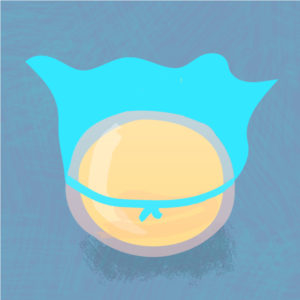
Forty-some years ago fat was just fat. And it was regarded with disdain, to say the least.
An entire industry existed to help get rid of fat, using what was then the latest mass media technology, television. If you wanted to get rid of fat you could exercise with Jack LaLanne as he worked out on television. We exercised in elementary school PE class to a vinyl recording of “Chicken Fat”. You could strap into a device that employed shaking to get rid of the fat from your “hips”, or eat a piece of chocolate fudge with a hot beverage before meals to curb your appetite.
Fat was not our friend. We knew long before the current diabetes epidemic that being overweight was not good for our health.
Fast forward to the 21st century, where we’ve learned that some forms of fat are actually good for you–important in metabolism, growth and immunity. The variety of types of mammalian fat include brown adipose tissue, beige adipose tissue and white adipose tissue, and it’s possible to convert one to the other under certain conditions. For details on these types of adipose tissue, read this article —after you finish this blog.
In mammals, cells called adipocytes create adipose tissue.
Now comes intriguing news of a new role for fat cells—wound healing. Furthermore, these investigators have found that fat body cells (FBCs) in their research model, Drosophila pupae, have the ability to move under their own power to a wound site to go to work.
FBCs are the Drosophila equivalent of invertebrate adipocytes.
The article, “Fat Body Cells are Motile and Actively Migrate to Wounds to Drive Repair and Prevent Infection” was published in late February, 2018, in Developmental Cell, by Anna Franz, Will Wood and Paul Martin, under open access.
The authors used live imaging of pupal epithelial wounds to show that fat body cells actively migrate to wounds, not by adhesion, but rather by actomyosin-generated peristaltic movement. Once at the wound site, the FBCs work with hemocytes, the Drosophilia version of macrophages, to clear up cellular debris, seal the wound gap and release antimicrobial peptides that help repair and fight infection.
Live-cell imaging using GFP fused to the actin-binding domain of moesin in FBCs demonstrated that they: 1) reside in the hemolymph; 2) are nonadherent; and 3) undergo constant actin-based contractile waves starting in the cell center and extending to the rear of the cell. These waves actually push the cells forward in an action similar to peristalsis, the muscular contractions that move food through mammalian intestines.
This movement is in contrast to the better known adherence-based movement using actin-enabled lamellipodia at the cells leading edge. (Note that FBCs do use lamellipodia in their wound-healing role.)
The paper includes some short video clips of the labeled FBCs, both from wounded and nonwounded pupae, so that you can see the differences in motion. The paper also contains some great diagrams of FBCs and hemocytes working at the wound site to clear cellular debris and fill in the wound gap.
This paper demonstrates collaboration between FBCs and hemocytes at the wound site and the authors note the similarity to recent mammalian studies showing interaction between adipocytes and macrophages in white adipose tissue, although this mammalian interaction can have negative consequences, unlike the FBC-wound healing example noted by Franz et al.
During cases of mammalian overnutrition, adipocytes in white adipose tissue are believed to release chemokines that trigger macrophage recruitment to fat tissue, resulting in chronic inflammation and insulin resistance.
So yes, fat, especially white adipose tissue, can be the bad guy, as in the mammalian example above (and as we believed back in the day).
On the other hand, the wound healing examples shown here in Drosophila are an intriguing and exciting new piece of the adipose tissue puzzle.
Maybe it’s time fat garnered a little more respect.
Again, here is the paper by Franz et al.:
Fat Body Cells are Motile and Actively Migrate to Wounds to Drive Repair and Prevent Infection
